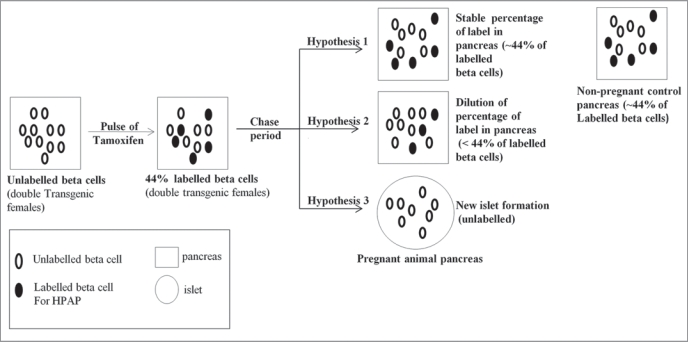Figure 2.
Analysing the origin of new β-cells during pregnancy. Double transgenic female mice (Z/AP; RIP-CreERTAM) were pulsed with tamoxifen to label their β-cells. Then during the chase period, pregnancy was induced in only one group of mice while the other animals were assigned to the non-pregnant control group. After the chase period, if the percentage of β-cells positive for HP AP in pancreas of the pregnant animals is identical to the non-pregnant controls we conclude that new β-cells are the progeny of pre-existing β-cells (Hypothesis 1). However, if there is a dilution of the percentage of HP AP-labelled β-cells in the pregnant animals, we conclude that a non-β-cell source gives rise to new β-cells, possibly in combination with a contribution from pre-existing β-cells (Hypothesis 2). Finally, if the percentage of islets totally devoid of any label is higher in pregnant animals than in the controls, one can deduce that whole new islets arise from non-β-cell progenitors (Hypothesis 3).

